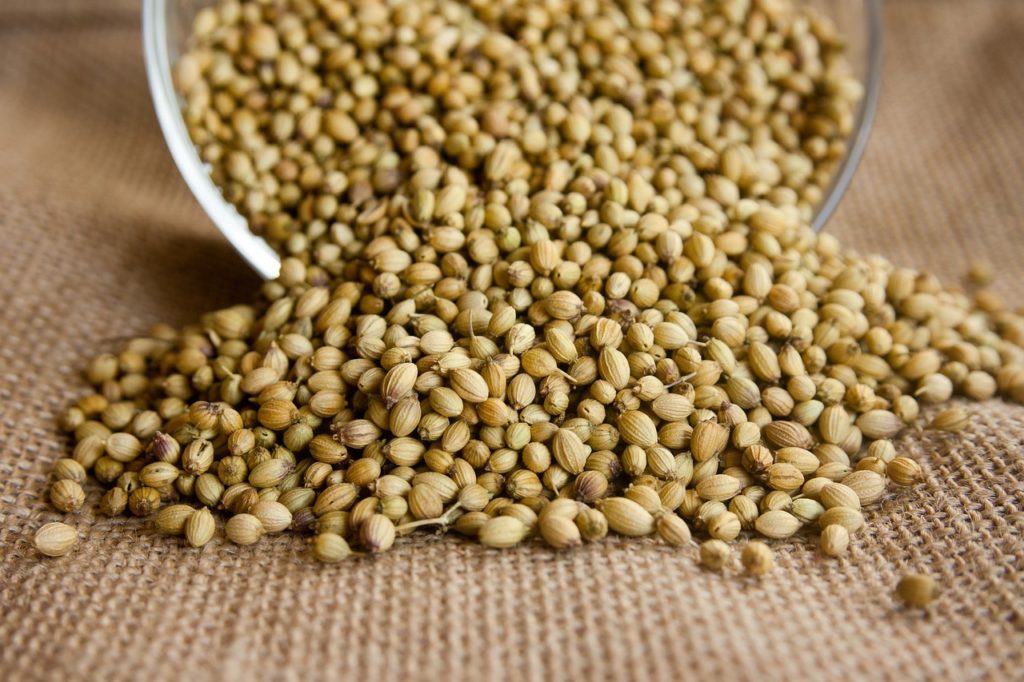
Coriander is the name of leaves and the plant’s stalk, while the dried seeds are termed the coriander seeds. This spice is usually found in the Indian spice mixture of garam masala, used in many dishes. Coriander seeds exporters mainly sell it to the countries where coriander is used in their every dish. It is also used for decorating the dishes.
What is coriander?
The word coriander is used here to describe the entire plant consisting of the leaves, stems, seeds, and other parts. Most people are referring to the spice which is produced from the seeds of a plant. The leaves of the plant are commonly known as cilantro. It comes from a Latin word in Spanish for coriander. Coriander is a native plant that grows worldwide, including in Asia, Europe, Africa, and the Americas.
Origin of coriander
The experts say that it uses dates back from 5000 BC.. Coriander was one of the ancient herbs which were grown by the American colonists.
What does it taste like?
Coriander seeds exporters have a very pleasing lemony flavor and floral aroma smell. Both the plant and the ripped seeds taste completely different from each other. Both cannot be substituted for each other. Fresh cilantro tastes pungent, and to a certain percentage of the population, it tastes very much soapy.
Cooking with coriander
Every seed is sometimes used in pickling and bringing. These seeds are usually toasted and are ground before use. They have a tough texture to chew. Dry roast them in a pan or the oven to produce ground coriander. They have their special taste and scent and are used in several vegetables to give a pleasing taste and flavor.
What are the recipes with the coriander?
Soups, stews, veggie, and meat dishes all contain ground coriander. Many traditional spice blends in Indian, Middle Eastern, and African cuisines contain this spice. Many best caterers sue it in several dishes and avail the taste of it.
Where to buy coriander?
Coriander can be found in the whole and the ground container in the spice section of the supermarket. Though it is good to buy the seeds and then toast them and grind them immediately. The ground spice loses its potency quickly. When buying the seeds at high supermarket stores, make sure that seeds are washed or not.
Storage of coriander
Container seeds exporters Keep coriander seeds and ground coriander away from light and heat in sealed containers. You’ll need to keep fresh cilantro refrigerated because it doesn’t last long. One approach is to store the cilantro in the vegetable crisper part of your refrigerator in an airtight, firmly closed plastic bag.
What are the benefits of coriander?
They can also aid in the reduction of harmful LDL cholesterol accumulation in the arteries and veins’ inner walls. This herb may also aid in the increase of “good” or HDL cholesterol, which acts as a protective barrier against certain harmful situations. Because components like cineole, borneol, limonene, alpha-pinene, and beta-phellandrene have antibacterial properties, they can also help relieve diarrhea caused by microbial and fungal activity.
Coriander has been shown to reduce blood pressure. Oral extracts and essential oil of coriander have shown promise in the treatment of colon inflammation. Coriander may also help decrease cholesterol, according to certain studies.
The oil extracted from coriander seeds may help to speed up and improve digestion. Antimicrobial substances found in coriander may aid in the treatment of some diseases and foodborne illnesses. Coriander has several skin advantages, including the treatment of minor rashes such as dermatitis.
Cost of plowing the coriander seeds
The cost of plowing the seeds is generally incurred at about RS 4000.
Final words
Coriander seeds exporters Coriander may be cultivated in both indoor and outdoor containers. Coriander is mostly cultivated from seeds (Dhaniya). When watering coriander, take care. Coriander plants will die if they receive too much or too little water. Seed treatment is required to protect coriander from several disease-causing pathogens.
Coriander seeds are dried fruits that are a mainstay in Indian cooking. Within 15 days, coriander seeds begin to germinate. Although all plant parts are edible, fresh leaves and dried seeds have historically been utilized in cooking. Coriander crop farming is beneficial during the summer season, when the crop may last up to 80 days. It is lucrative because it uses fewer inputs and costs fewer inputs than other vegetable crops.
Furthermore, coriander is in great demand throughout the summer months. Workers are required at important crop phases such as irrigation, harvesting, and weeding and intercultural operations, where we require two laborers per day for five days. It entails a cost of Rs. 2,500. Because of its antibacterial qualities, coriander oil is a natural and safe food preservative. Coriander oil has been studied as a food preservative because it may remove dangerous bacteria, fungus, and yeast from food.
